Prose poetry is poetry written in prose form instead of verse form, while preserving poetic qualities such as heightened imagery, parataxis, and emotional effects.
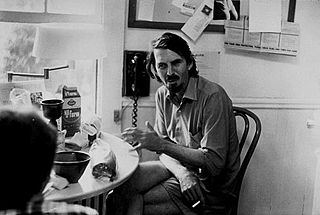
Robert White Creeley was an American poet and author of more than sixty books. He is usually associated with the Black Mountain poets, though his verse aesthetic diverged from that school. He was close with Charles Olson, Robert Duncan, Allen Ginsberg, John Wieners and Ed Dorn. He served as the Samuel P. Capen Professor of Poetry and the Humanities at State University of New York at Buffalo. In 1991, he joined colleagues Susan Howe, Charles Bernstein, Raymond Federman, Robert Bertholf, and Dennis Tedlock in founding the Poetics Program at Buffalo. Creeley lived in Waldoboro, Buffalo, and Providence, where he taught at Brown University. He was a recipient of the Lannan Foundation Lifetime Achievement Award.

John Lawrence Ashbery was an American poet and art critic.

The Ern Malley hoax, also called the Ern Malley affair, is Australia's most famous literary hoax. Its name derives from Ernest Lalor "Ern" Malley, a fictitious poet whose biography and body of work were created in one day in 1943 by conservative writers James McAuley and Harold Stewart in order to hoax the Angry Penguins, a modernist art and literary movement centred around a journal of the same name, co-edited by poet Max Harris and art patron John Reed, of Heide, Melbourne.

Susan Howe is an American poet, scholar, essayist and critic, who has been closely associated with the Language poets, among other poetry movements. Her work is often classified as Postmodern because it expands traditional notions of genre. Many of Howe's books are layered with historical, mythical, and other references, often presented in an unorthodox format. Her work contains lyrical echoes of sound, and yet is not pinned down by a consistent metrical pattern or a conventional poetic rhyme scheme.
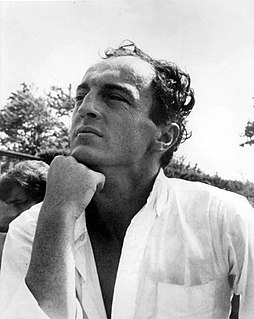
Francis Russell "Frank" O'Hara was an American writer, poet, and art critic. A curator at the Museum of Modern Art, O'Hara became prominent in New York City's art world. O'Hara is regarded as a leading figure in the New York School, an informal group of artists, writers, and musicians who drew inspiration from jazz, surrealism, abstract expressionism, action painting, and contemporary avant-garde art movements.
Kenneth Koch was an American poet, playwright, and professor, active from the 1950s until his death at age 77. He was a prominent poet of the New York School of poetry. This was a loose group of poets including Frank O'Hara and John Ashbery that eschewed contemporary introspective poetry in favor of an exuberant, cosmopolitan style that drew major inspiration from travel, painting, and music.
The New York School was an informal group of American poets, painters, dancers, and musicians active in the 1950s and 1960s in New York City. They often drew inspiration from surrealism and the contemporary avant-garde art movements, in particular action painting, abstract expressionism, jazz, improvisational theater, experimental music, and the interaction of friends in the New York City art world's vanguard circle.
David Lehman is an American poet, non-fiction writer, and literary critic, and the founder and series editor for The Best American Poetry. He was a writer and freelance journalist for fifteen years, writing for such publications as Newsweek, The Wall Street Journal, and The New York Times. In 2006, Lehman served as Editor for the new Oxford Book of American Poetry. He taught and was the Poetry Coordinator at The New School in New York City until May 2018.
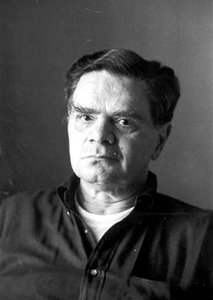
James Marcus Schuyler was an American poet. His awards include the Pulitzer Prize for Poetry for his 1980 collection The Morning of the Poem. He was a central figure in the New York School and is often associated with fellow New York School poets John Ashbery, Frank O'Hara, Kenneth Koch, and Barbara Guest.
Helen Hennessy Vendler is an American literary critic and is Porter University Professor Emerita at Harvard University.
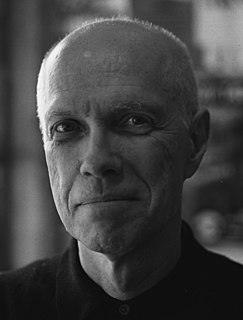
Ron Padgett is an American poet, essayist, fiction writer, translator, and a member of the New York School. Great Balls of Fire, Padgett's first full-length collection of poems, was published in 1969. He won a 2009 Shelley Memorial Award. In 2018, he won the Frost Medal from the Poetry Society of America.
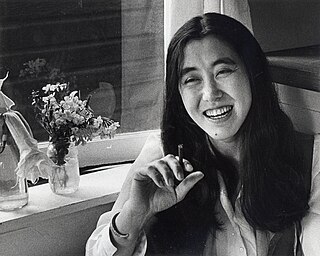
Mei-mei Berssenbrugge is a contemporary poet. Winner of two American Book Awards, her work is often associated with the Language School, the poetry of the New York School, phenomenology, and visual art. She is married to the painter Richard Tuttle, with whom she has frequently collaborated.
David Shapiro is an American poet, literary critic, and art historian. He has written some twenty volumes of poetry, literary, and art criticism. He was first published at the age of thirteen, and his first book was published when he was just eighteen.
Meditative poetry combines the religious practice of meditation with verse. Buddhist and Hindu writers have developed extensive theories and phase models for meditation.

Self-Portrait in a Convex Mirror is a 1975 poetry collection by the American writer John Ashbery. The title, shared with its final poem, comes from the painting of the same name by the Late Renaissance artist Parmigianino. The book won the Pulitzer Prize, the National Book Award, and the National Book Critics Circle Award, the only book to have received all three awards.

Where Shall I Wander is a 2005 poetry collection by the American writer John Ashbery. The title comes from the nursery rhyme "Goosey Goosey Gander". It is Ashbery's 23rd book of poetry and was published through Ecco Press. It was a finalist for the National Book Award for Poetry.
Pierre Martory was a French poet whose influence on New York School poets was quiet but profound. His work was admired by Frank O'Hara, James Schuyler, Harry Mathews, and others, and translated extensively by John Ashbery, with whom he shared his life in Paris for nearly a decade. His work has appeared in many books in both England and the United States, as well as in The New Yorker and Poetry. Martory’s personal “charm,” the poet Ann Lauterbach once said, “devolved back to the original meaning of ‘spell.’” However, as Ashbery has noted, “Both the humor and the sadness in his poems are always rendered with an unemphatic clarity that is certainly Mozartian.” Born in Bayonne, France, of partly Basque ancestry, Pierre Martory spent much of his early life in Morocco. He joined the Free French Forces in North Africa when World War II interrupted his college studies at the School of Political Science, Paris. Afterwards, he began writing fiction and poetry and studied music as well. In 1953, Denoël published his first novel, Phébus ou le beau mariage. His other novels remain unpublished. For more than twenty years, he was drama and music critic at Paris Match, where he mentored and worked with the journalist Denis Demonpion, now editor of Le Point and a biographer.

The bibliography of John Ashbery includes poetry, literary criticism, art criticism, journalism, drama, fiction, and translations of verse and prose. His most significant body of work is in poetry, having published numerous poetry collections, book-length poems, and limited edition chapbooks. In his capacity as a journalist and art critic, he contributed to magazines like New York and Newsweek. He served for a time as the editor of Art and Literature: an International Review and as executive editor of Art News. In drama and fiction, he wrote five plays and cowrote the novel A Nest of Ninnies with James Schuyler. Beyond his original works, he translated verse and prose from French. Many of his works of poetry, prose, drama, and translations have been compiled in volumes of collected writings.










